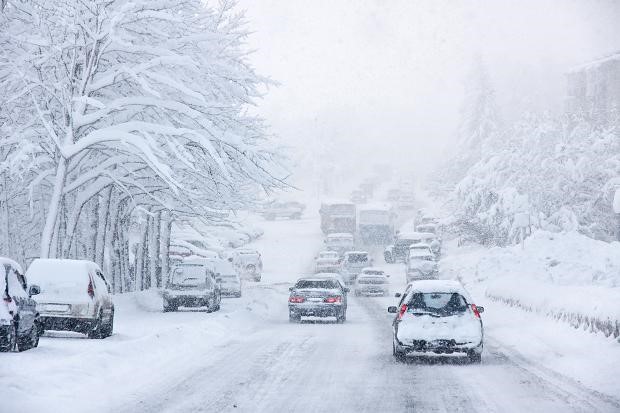Top 10 winter driving tips
Thursday, 4 February, 2016
FROSTY mornings are finally here and reports suggest ice and snow will have arrived across the UK in a matter of weeks.
Winter weather will affect your driving, with stopping distances rapidly increasing in wet and icy conditions.

Here’s ten tips to maintaining and handling your car over the winter period
1. Keep an in-car charger in the vehicle. Check essential fluid levels – washer bottles, oil, coolant and fuel before setting off.
2. Remove snow from the whole of the car and make sure all windows and lights are clean and clear of snow and ice. Slow down and keep a safe distance from the car in front.
3. When climbing a snowy or icy hill, use a higher gear than you would in dry conditions. If you have to stop and then pull away again on a climb, put the car in second gear then release the clutch slowly and progressively at the same time as applying the accelerator slowly and progressively.
4. Brake gradually to stop the wheels locking on snowy or icy roads. If the wheels lock, the vehicle will slide. If this happens, release the brake pedal to recover traction, then use engine braking along with the brake pedal.
5. To avoid sliding when pulling away on snow, accelerate very gradually. If the wheels slide, engage the next gear up to decrease the force applied to the wheels.
6. Before tackling a snowy or icy bend, slow down in a straight line. To avoid losing control when you take the corner, steer with a constant, flowing movement. Maintain a slow and regular speed.
7. Slow down in the wet. Rain mixes with oil and dirt on the road to create slippery conditions.
8. If you have to drive through floodwater, drive slowly, use a low gear and try to keep the engine revving at a high rate. Move forward continuously to avoid stalling. The deepest water is usually near the kerb.
9. Always test your brakes after driving through water. Brakes should be tested by touching the brake pedal very lightly at a very low speed.
10. Check your tyres have adequate tread (1.6mm is the minimum tread legally required) and look for any damage such as cuts, splits bald patches or sidewall bulges. Check your tyre pressures regularly – cold temperatures can significantly decrease tyre pressures. You may also wish to consider fitting Winter Tread Tyres for the winter season – they perform significantly better than your standard ‘summer’ tyres, particularly when the temperatures fall below 7 degrees Centigrade.
Drive safely.
Back to news list




